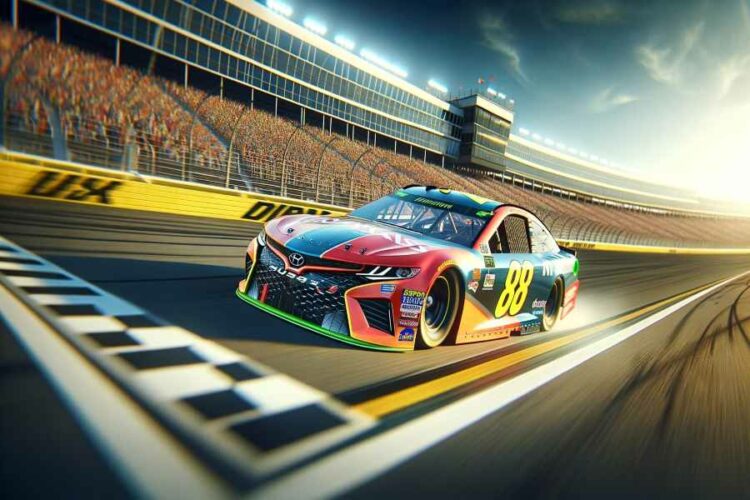The thrill of NASCAR racing lies in its intense speed and high-stakes competition. One of the most fascinating aspects of this sport is the top speeds achieved by these powerful race cars. Fans and enthusiasts often wonder what the world record top speed is for a NASCAR race car. This question has captivated the minds of many, leading to a deeper exploration of the technology, engineering, and skills required to reach these astounding speeds. In this comprehensive article, we will delve into the specifics of the world record top speed for a NASCAR race car, exploring the factors that contribute to these high velocities, the history behind these records, and what the future holds for speed in NASCAR racing.
What is the world record top speed for a NASCAR race car?
The world record top speed for a NASCAR race car is a testament to the incredible achievement of Bill Elliott, who reached an astonishing 212.809 mph (342.483 km/h) during a qualifying run at Talladega Superspeedway in 1987. This record, which still stands today, showcases the unparalleled engineering and performance capabilities of NASCAR vehicles, inspiring generations of racers and fans alike.
The Evolution Of NASCAR Speed Records
NASCAR speed records have evolved significantly, reflecting technological advancements, engineering, and driver skills. The early years of NASCAR saw relatively modest speeds compared to today’s records. However, as technology progressed, so did the speeds achieved on the track.
In the 1950s and 1960s, NASCAR cars began to push speed limits, with drivers setting new records at various tracks. The introduction of more powerful engines and aerodynamic designs in the 1970s and 1980s further increased the top speeds of NASCAR vehicles.
Bill Elliott’s record-breaking run in 1987 was a milestone moment, showcasing the pinnacle of NASCAR speed at that time. Since then, the sport has continued to evolve, with ongoing innovations to enhance performance and safety.
Despite the advancements, Elliott’s record still stands, a testament to the incredible achievement of that era. The relentless pursuit of speed continues to fuel the evolution of NASCAR, with each generation of cars and drivers striving to push the boundaries even further, promising an exhilarating future for the sport.
The Role Of Aerodynamics in Achieving High Speeds
Aerodynamic Principles in NASCAR: Aerodynamics plays a vital role in the performance of NASCAR race cars. The design of the car’s body, including its shape and surface features, is engineered to minimize air resistance and maximize downforce.
Reducing Drag: One of the primary goals of aerodynamic design is to reduce drag, which is the resistance a car faces as it moves through the air. By streamlining the car’s body and incorporating features such as smooth contours and air dams, engineers can significantly decrease drag, allowing the car to travel faster.
Enhancing Downforce: Downforce is another critical aspect of aerodynamics, as it helps keep the car stable at high speeds. By creating downward pressure on the car, downforce improves traction and handling, allowing drivers to maintain control even at top speeds.
Wind Tunnel Testing: Wind tunnel testing is crucial to the aerodynamic design process. By testing scale models or full-sized cars in a wind tunnel, engineers can observe how air flows over the vehicle and make adjustments to optimize performance.
Computer Simulations: Advancements in computer technology have also enhanced aerodynamic design. Engineers can use sophisticated software to simulate different aerodynamic scenarios and refine their designs to achieve the best possible results.
Key Components Contributing To Top Speed
- Engine Power: The engine is the heart of a NASCAR race car, providing the power needed to achieve high speeds. Modern engines are built to deliver maximum horsepower while maintaining efficiency and reliability.
- Transmission System: The transmission system is crucial in transferring power from the engine to the wheels. High-performance transmissions are designed to handle the immense power generated by the engine and provide smooth, efficient gear shifts.
- Tires: Tires are essential for maintaining traction and handling at high speeds. NASCAR tires are designed to provide optimal grip and durability, allowing drivers to navigate corners and straightaways safely.
- Suspension System: The suspension system helps keep the car stable and responsive at high speeds. Advanced suspension technology allows for better handling and improved performance on the track.
- Aerodynamic Features: Various aerodynamic features, such as spoilers, splitters, and air ducts, contribute to the overall performance of the car. These features help reduce drag, increase downforce, and enhance stability.
Safety Innovations Allowing Higher NASCAR Speeds
Safety in NASCAR has evolved dramatically, enabling higher speeds without compromising driver safety. Key innovations include:
Improved Car Construction
Modern NASCAR cars are built with reinforced frames and advanced materials that provide excellent protection during a crash. These improvements have allowed drivers to reach higher speeds with increased confidence in their safety.
Advanced Safety Equipment
Drivers can now access advanced safety equipment, including HANS (Head and Neck Support) devices, fire-resistant suits, and improved helmets. These advancements have significantly reduced the risk of injury, even at high speeds.
Enhanced Track Safety
Tracks are also designed with safety in mind, featuring improved barriers, safer track layouts, and better emergency response protocols. These measures help protect drivers and reduce the severity of accidents.
Crash Testing and Research
Ongoing crash testing and research have provided valuable insights into improving car and track safety. This research has led to the developing new safety standards and protocols that enhance driver safety at high speeds.
Conclusion
Bill Elliott’s 212.809 mph world record top speed for a NASCAR race car remains a significant milestone in the sport’s history. This achievement highlights the incredible engineering, technological advancements, and driver skills that define NASCAR racing. As technology continues to evolve, the pursuit of speed will undoubtedly lead to new records and exciting developments in the future of NASCAR.
FAQ’s
How has aerodynamics improved NASCAR speeds?
Aerodynamics has improved NASCAR speeds by reducing drag and increasing downforce, allowing cars to travel faster and remain stable at high velocities.
What role do engines play in achieving high speeds in NASCAR?
Engines are crucial in achieving high speeds. They provide the necessary power and efficiency to propel the car at maximum velocity while maintaining reliability.
How do track conditions affect NASCAR speed?
Track conditions, including surface quality, layout, and weather, significantly impact the achievable speeds in NASCAR, influencing traction, handling, and overall performance.







